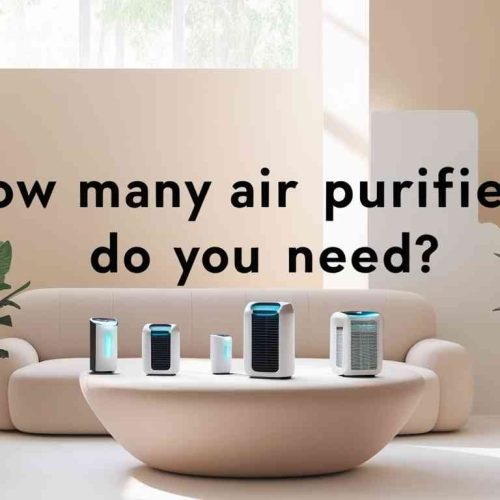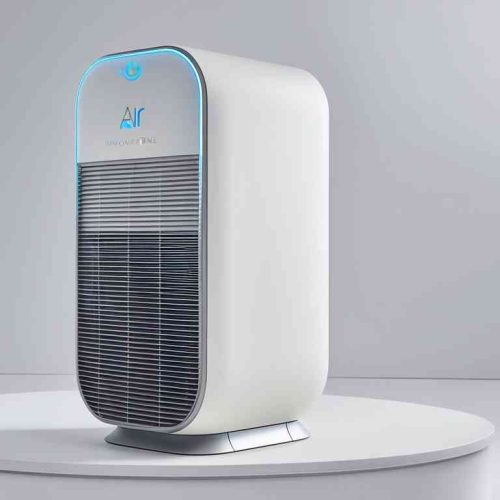Can I run my air purifier with the windows open? Discover if using an air purifier with open windows is effective. Tips and insights on maximizing air purifier performance in different settings.
Opening windows is a logical way to garner fresh airflow alongside an air purifier unit. Yet this combination also invites some potential downsides that warrant consideration.
With pollen levels rising, many homeowners wonder whether operating their purifier with cracked windows maximizes or hinders its filtration capabilities.
Determining ideal configurations and proper usage requires balancing increased ventilation against conditioned air loss, filtration efficacy, and unit overwork.
When synchronized appropriately, purified and natural air circulation synergy can better eliminate allergens and refresh indoor spaces. But what exactly is the interplay between open windows and air purifiers in practice?
How Air Purifiers Work
An air purifier, another familiar home appliance, is an item intended to freshen the air in your household. They work by holding contaminants and allergy-causing particles in filters, hence cleaning the air you breathe.
The effectiveness of these devices often raises a vital question: “Is it okay to turn on my air purifier with the windows opened?
Recirculating Filtration Explained
Air purifiers draw surrounding room air into an internal fan-powered system. The multiple filtration stages inside the appliance’s housing work to trap and reduce indoor air pollutants.
These stages can include pre-filters, HEPA, carbon, and other advanced technology filters. After filtration, the purified air flows back out of the unit to recirculate within indoor spaces, continually exchanging airborne particulates.
By recapturing, scrubbing, and rereleasing now cleaner air back into rooms, air purification appliances effectively and efficiently improve indoor air quality over time through sustained recirculation.
When windows open, the outdoor air influx can disrupt this cycle. Introducing new air particles can either overload the system or reduce its efficiency in cleaning the existing indoor air. This leads us to consider how to balance fresh air intakes with the operation of an air purifier.
Balancing Fresh Air Intakes
Balancing the introduction of fresh outdoor air with the functioning of an air purifier is a delicate task. Opening windows can provide natural ventilation, but it also introduces new contaminants. This can be particularly challenging in urban areas with higher pollution levels.
The answer to whether you can run your air purifier with the windows open depends on various factors. In environments with relatively clean outdoor air, opening windows for a short duration while the purifier runs might not significantly impact its performance. However, keeping windows closed in more polluted settings is advisable to allow the air purifier to work optimally.

Potential Downsides of Open Windows
What is the Speed of Light? Explained in 5 Minutes! But is it still practical to use it while windows are open? While the fresh air circulation is nice, some cons exist.
Losing Expensive Conditioned Air
Having both the purifier and open windows allows constant air movement, which fully utilizes the unit’s filtration. It brings in fresh outdoor air and removes stale indoor air, offering complete room ventilation and improved air quality.
However, a significant risk is losing expensive conditioned air. If the room is climate-controlled, energy escapes out the windows. This wastes money over time. Instead, air should recirculate through the purifier to maximize efficiency.
Keeping windows slightly open can benefit from gentle airflow without excessive conditioned air loss. This allows some fresh air circulation without totally compromising efficiency.
Reduced Filtration Efficacy
Open windows also reduce filtration efficacy. Allergens like pollen easily blow inside, overwhelming the purifier, which has to work harder to clean the constant influx of particles. Closing windows helps filter existing indoor air instead.
Positioning the unit right next to cracked windows can help catch more pollen. Additionally, use the highest fan setting when pollen counts spike. This ensures it filters the air multiple times per hour.
Yet windows should shut completely during extreme outdoor pollution, heat waves, or humidity to prevent the purifier from overworking.
Benefits of Supplemental Ventilation
Effective ventilation is crucial for indoor air quality. Supplemental systems that actively facilitate air exchange provide major benefits over passive ventilation alone.
Accelerating Air Exchange Rates
The EPA recommends homes achieve at least .35 air changes per hour (ACH), although up to 1 ACH is ideal. This means replacing a volume of air equivalent to the home’s size once per hour. Supplemental fans accelerate this rate.
Built-in exhaust fans in kitchens and bathrooms aid ventilation but run intermittently. Whole-house fans and HRVs run continuously, ventilating the home multiple times per hour. These maximize ACHs to meet EPA guidelines more dependably.
Higher ACHs mean constantly bringing fresh air to displace stale, polluted air. With rapid air movement, allergens and chemicals cannot build up as readily. Accelerated rates also minimize humidity and odors that linger with deficient ventilation.
Enhanced Source Dilution
Active systems move air through multiple rooms, while passive vents are limited in location. Kitchen and bath fan-powered airflows strategically target moisture and pollutants at their source before dilution and distribution throughout the home.
This rapid on-site extraction localizes containment while replacing the space with fresh outdoor air. With source capture ventilation, chemicals, viruses, and humidity concentrations dilute faster, minimizing spread and maintaining healthier indoor conditions.
In essence, supplemental systems extend ventilation beyond what passive methods provide. When properly installed, rates, distribution patterns, and on-site source dilution mean better air quality for homeowners.
Enhanced Source Dilution
Another benefit is enhanced source dilution. Opening windows helps dilute indoor air pollutants. This works especially well for pollutants from inside sources like cooking, smoking, or material emissions.
Diluting through ventilation targets pollutants originating from specific in-home sources. By introducing a steady flow of outdoor air, these pollutants are diluted more rapidly than they would be by filtration alone.
This aspect of supplemental ventilation is particularly useful in scenarios where there is a temporary spike in indoor pollutants, such as during and immediately after cooking or if someone smokes indoors.
In such cases, combining an air purifier and open windows can significantly improve air quality by filtering and diluting indoor air pollutants.

Optimizing Joint Operation Approaches
In the quest for cleaner indoor air, homeowners often ask, “Can I run my air purifier with the windows open?” The answer isn’t straightforward, but with strategic planning, the joint operation of air purifiers and natural ventilation can be optimized. Let’s explore how to coordinate these two elements effectively for improved indoor air quality.
Adjusting Output Vents Strategically
The first step in harmonizing air purifiers and open windows is strategically adjusting your air purification system’s output vents. Positioning these vents to complement the natural airflow from open windows can enhance the overall circulation of purified air.
For example, directing the purified air towards areas where the influx of outdoor air is most prominent can help mix and dilute outdoor pollutants more effectively. This approach can be beneficial in rooms where windows are frequently opened for ventilation.
Using Timer Settings to Coordinate
Modern air purifiers often come equipped with timer settings, an invaluable feature for coordinating their operation with open windows. Setting timers activates air purifiers when needed most.
For example, timed operation when windows are closed boosts efficiency. Targeting operation for periods of least ventilation ensures purifiers work most efficiently then.
Conversely, the purifier intensity can be lowered or turned off when windows are open for extended periods. This conserves energy while relying on natural ventilation.
Considering Room and Season Specifics
Tailoring the approach to specific rooms and seasons is also crucial. For instance, in bedrooms or living areas where people spend more time, keeping windows closed and relying more on air purifiers might be preferable, especially during allergy seasons. On the other hand, opening windows for natural ventilation can be advantageous in less frequently used spaces or during seasons with milder weather and cleaner outdoor air.
However, if the external environment affects the quality of circulating air, for example, in urban areas during traffic or increased pollution, it is recommended to close the windows and use only air purifiers; on the other hand, if the levels of pollution are relatively low, either using the windows and allowing fresh air into the room, or using an air purifier, will suffice.
Conclusion
In conclusion, “Can I run my air purifier with the windows open?” invites a nuanced approach. The key lies in understanding and balancing the unique dynamics of your living space, air quality needs, and external environmental factors. Open windows create natural airflow to the room. Still, new external factors might influence the air purifier’s work.
Indoor air should then be conditioned to correspond to the conditions of the specific space, time of year, and the outside environment of that location. Strategic use of air purifiers, such as adjusting their settings or using timer functions, can complement periods of natural ventilation. Remember, relying more on air purifiers with windows closed in high-pollution areas or during allergy seasons may be more beneficial.
In any case, the criteria for an ideal indoor environment revolve around the optimal employment of mechanical and natural air purification. Considering these factors, you can achieve a healthy and comfortable living environment and answer the question, “Can I run my air purifier with the windows open?” specifically and with a high engagement of relevant and reliable data.
FAQ
Q: Just as we have a doubt, does opening windows reduce the effectiveness of air purifiers?
Ans: Yes, allowing purified air to escape outside can lower the efficiency of recirculating filtration that air purifiers rely on. But moderate ventilation brings benefits, too, when balanced thoughtfully.
Q: Should you run purifiers while window AC units are vented?
Ans: Partially closing dampers on window air conditioning units while simultaneously operating air purifiers boosts air exchange rates for maximum space refreshing.
Q: What settings maximize joint air purifier and open window usage?
Ans: Adjust vents on units to limit driving conditioned interior air outside. Set timers to boost fan speeds during ventilation temporarily. Close windows when leaving spaces vacant. Strategies optimize tandem operations.
Q: Do weather and seasonal conditions influence approaches?
Ans: Yes, relying more on ventilation during mild weather saves energy costs. When climate control is a priority, less ventilation is needed in severe heat, humidity, or cold. Passive ventilation saves money when outdoor conditions permit, while harsh weather warrants reliance on climate control instead.
Q: Does fresh air intake offset any loss in filtration efficiency?
Ans: Ventilation provides air exchange benefits. It directly evacuates some indoor contaminants quicker through open windows. Meanwhile, air purifiers polish any remaining particles. Supplemental ventilation and purification balance each other.
Q: Should you close vents connected to central HVAC ductwork before opening windows?
Ans: Yes, shutting vents first retains conditioned central air. This prevents wasting heated or chilled air that would evacuate through opened windows meant for spot ventilation.
Q: What rooms benefit most from combined window and purifier usage?
Ans: Spaces occupied most, like bedrooms and living areas, maximize benefits when airing while vacant. They also utilize continual purification to filter Indy air when residents are away. Combining sufficient window airing when possible with ongoing purification is ideal.












